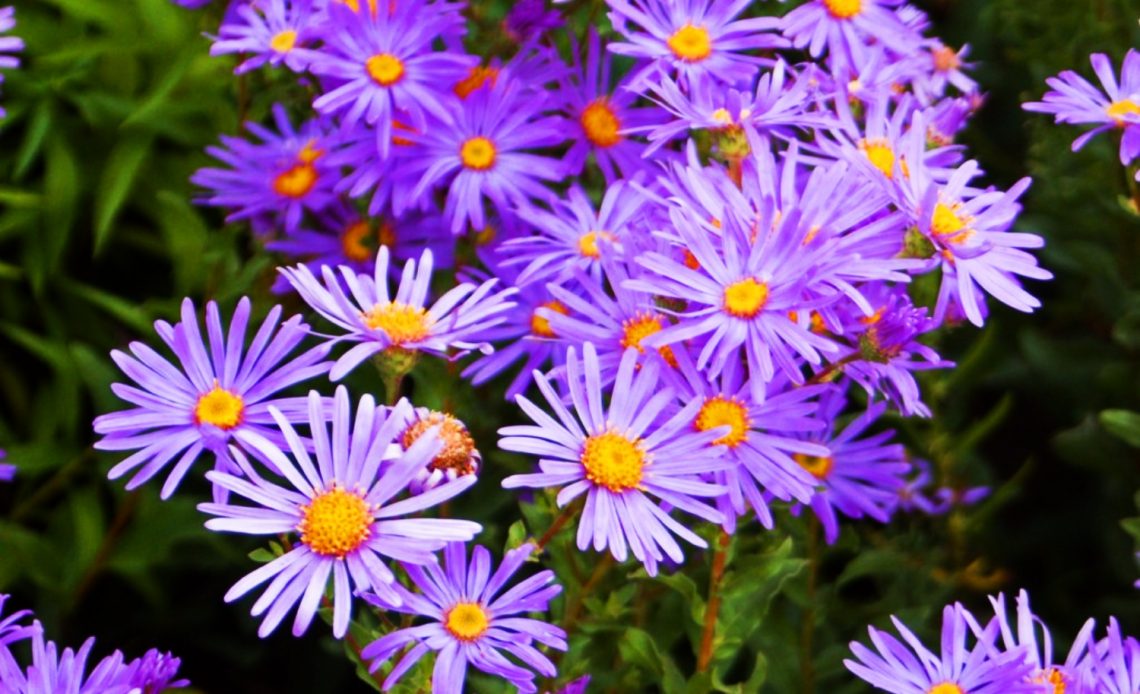

We’re here to help! Wild Yards is a completely free website that is 100% dedicated to helping you create a wildlife-friendly, sustainable yard. Read more
WildYards is reader-supported. When you buy a product through a link on our site, we may earn a comission. Every product is independently selected by our (obsessive) editors and our reviews are unbiased and objective. Read more about our mission or our privacy policy.
With their delightful open faces and unpretentious good looks, it’s hard not to love daisies.
In fact, gardeners aren’t the only ones who love these classic flowers. Bees, butterflies, and other pollinators enjoy them as well.
Although pollinators prefer to browse a variety of flowers, including bell-shaped blooms like amaryllis and star-shaped blossoms like jasmine, open-faced flowers like daisies are their ideal.
Open-faced flowers are shallow and make it easy for insects to collect nectar. They also provide insects with a cushion to rest on as they gather pollen.
If you already have daisies in your garden, and you want to plant more open-faced blooms for local pollinators, here are 13 flowers that look like daisies.
German chamomile, forget-me-nots, and pot marigolds are delicate daisy alternatives. But coneflowers, false sunflowers, and zinnias are better for filling large spaces.
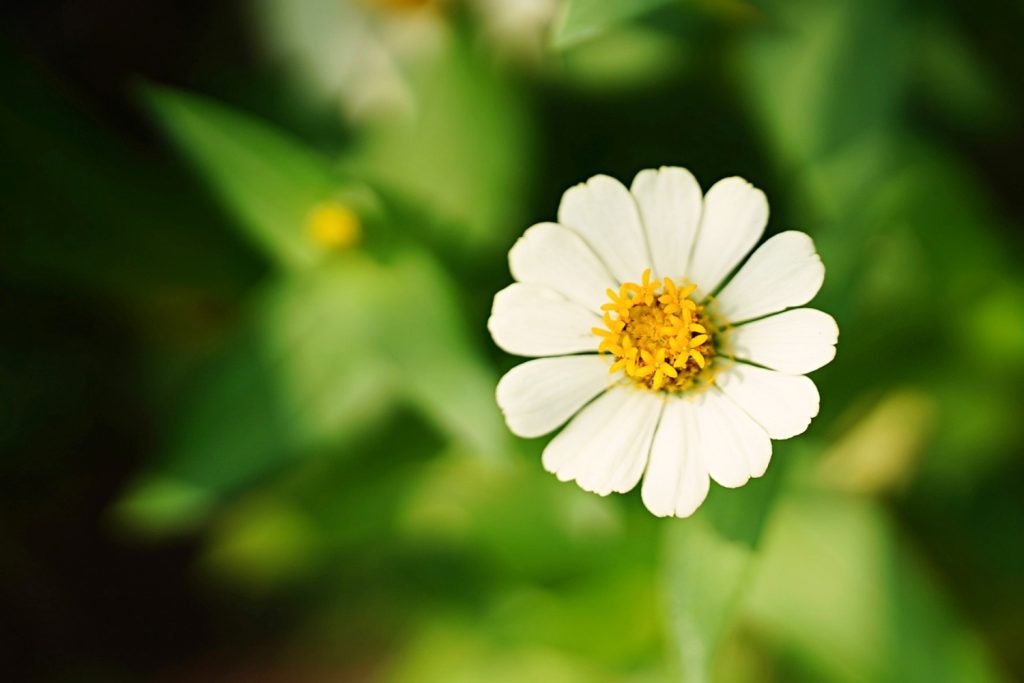
Black-Eyed Susans
| Scientific name | Rudbeckia hirta |
| Growing zones | 3 through 9 |
| Light requirements | Full sunlight |
| Soil preference | Sandy, loamy, well-draining, slightly acidic |
| Maximum size | 2’ to 3’ tall by 1’ to 2’ wide |
Not to be confused with black-eyed Susan vine, black-eyed Susan is a wildflower often found growing along roadways and in open fields.
Plants produce dense foliage, with fuzzy light green leaves situated at the base of the plant.
The flowers themselves bloom at the ends of tall stalks and look like small sunflowers with brown to black centers and golden-yellow petals.
Black-eyed Susans can spread quickly in ideal conditions, and are easy to grow, even in poor soils.
These short-lived perennials are typically grown as annuals in cooler growing zones. If you want your black-eyed Susans to come back on their own, avoid deadheading them, and instead allow the flowers to go to seed.
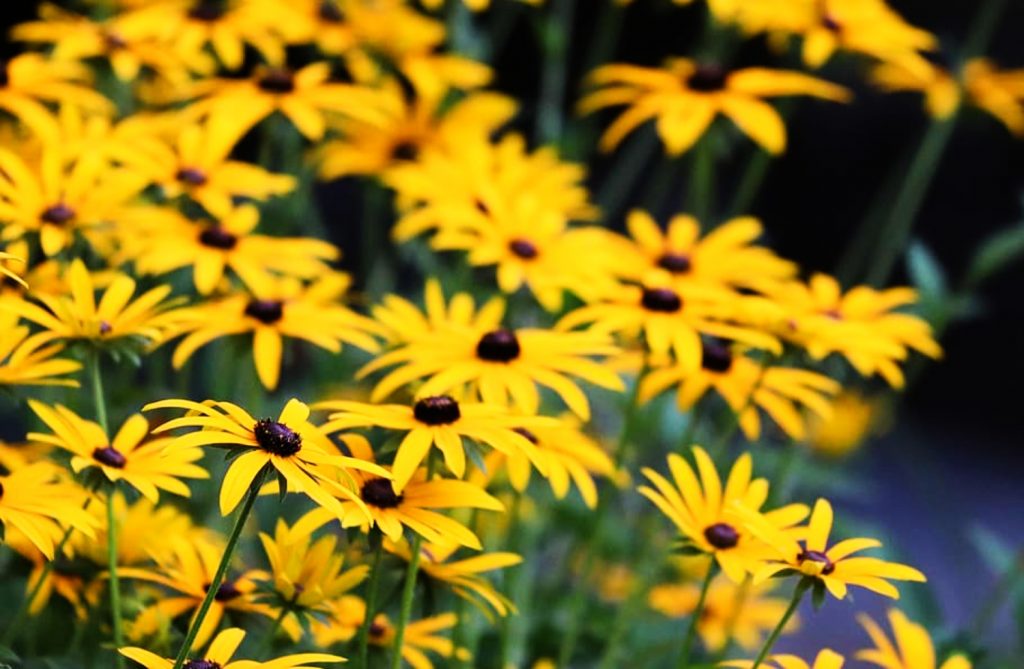
‘Berry Chiffon’ Coreopsis
| Scientific name | Coreopsis verticillata ‘Berry Chiffon’ |
| Growing zones | 3 through 9 |
| Light requirements | Full sun |
| Soil preference | Sandy, loamy, rocky, well-draining |
| Maximum size | 15” to 18” tall by 18” to 22” wide |
There are hundreds of varieties of coreopsis to choose from, but ‘Berry Chiffon’ is hard to pass up.
Like other coreopsis varieties, ‘Berry Chiffon’ is similar in shape to a classic daisy, with delicate petals surrounding a central disk.
But unlike classic daisies, ‘Berry Chiffon’ is bicolored. The tips of the flowers are white to pale pink, but the color intensifies toward the center into a rich magenta with just a hint of blue, the color of crushed ripe blueberries.
‘Berry Chiffon’ is quite busy to look at. But planted alongside the understated daisy, this flower really shines.
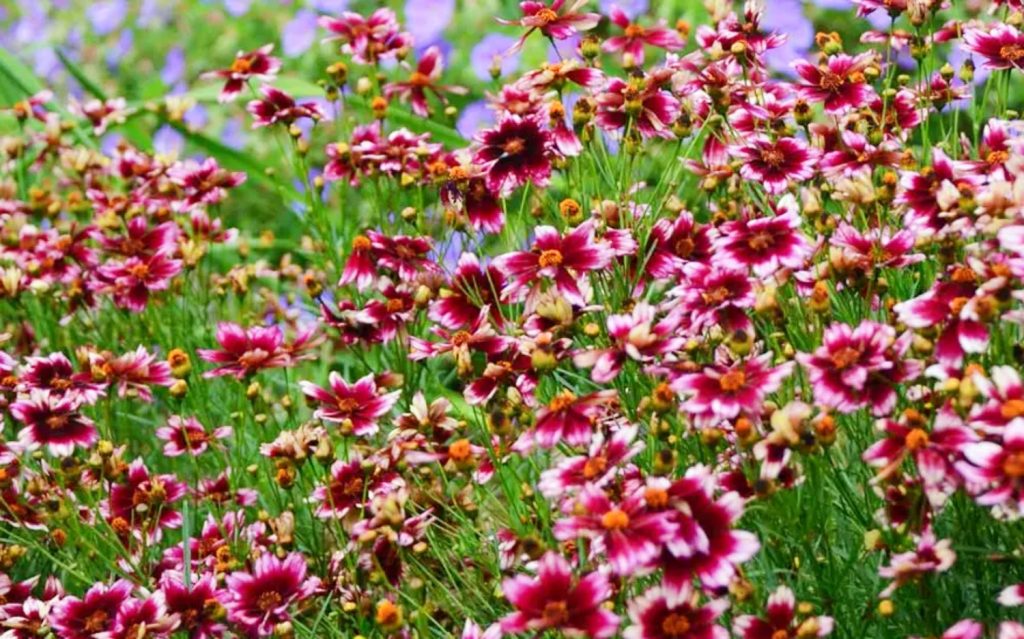
Forget-Me-Not
| Scientific name | Myosostis sylvatica |
| Growing zones | 3 through 8 |
| Light requirements | Full to partial sunlight |
| Soil preference | Loamy, well-draining soil rich in organic matter |
| Maximum size | 6” to 12” tall by 6” to 12” wide |
Forget-me-nots are tiny flowers that look like daisies, and are often mistaken for them.
The great thing about forget-me-nots is that they’re easy to grow. They’re so easy to grow, in fact, that many people consider these tiny purple blossoms to be weeds.
But other gardeners use forget-me-nots as a ground cover for flower beds and even as a low-growing border for walkways.
Forget-me-nots are also a great alternative to daisies for rock gardens.
If you’re determined to rewild your lawn, add forget-me-nots to your wildflower seed mixture. These annuals self-seed very well, and bees and butterflies can’t get enough of them!
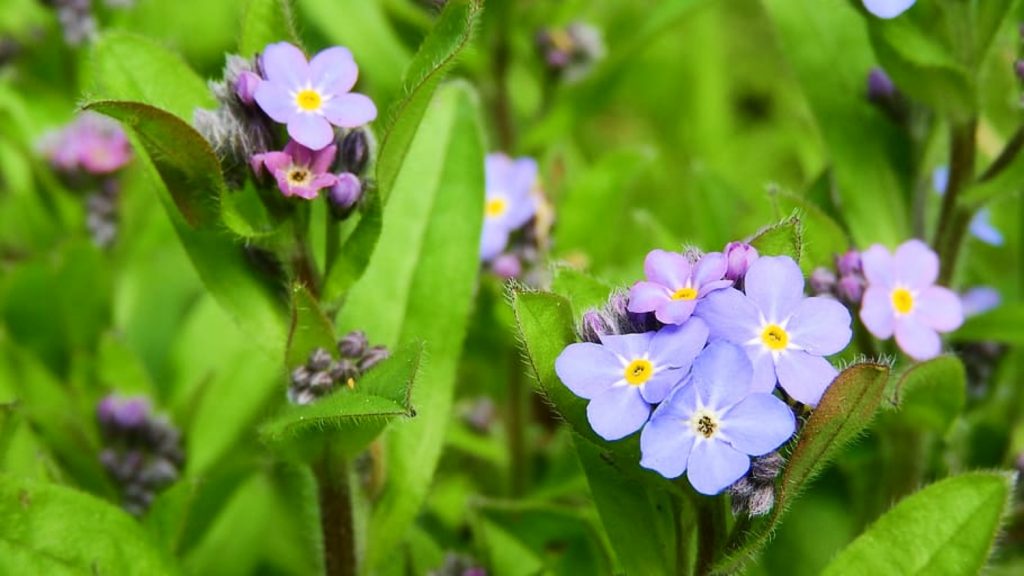
False Sunflower
| Scientific name | Heliopsis helianthoides |
| Growing zones | 3 through 9 |
| Light requirements | Full sunlight |
| Soil preference | Sandy to loamy, well-draining soil |
| Maximum size | 3’ to 12’ tall by 2’ to 3’ wide |
False sunflower looks pretty real to us! This fantastic yellow flower looks a lot like a daisy. But averaging around 10’ tall, false sunflower could never be mistaken for a real daisy.
False sunflowers are a beautiful, summery flower; the perfect way to usher in the warmer weather.
Although the false sunflower looks a lot like the daisy, it’s also a good substitute for real sunflowers.
While real sunflowers typically only produce one large bloom, false sunflowers produce multiple blooms all of the same size — which is around 2” to 4”.
Plant false sunflowers in your pollinator-friendly flower beds, or to landscape around the foundation of your home.
Purple Coneflower
| Scientific name | Echinacea purpurea |
| Growing zones | 3 through 10 |
| Light requirements | Full to partial sunlight |
| Soil preference | Sandy to loamy, well-draining |
| Maximum size | 2’ to 5’ tall by 1 ½’ to 2’ wide |
Also known as echinacea, purple coneflowers are irresistible for so many reasons.
For starters, these flowers are easy on the eyes. Their yellow-brown centers are accented by lovely purple petals. These flowers make an excellent companion plant.
Bees and butterflies are bound to visit your garden if you use these perennials as a border for your flower beds.
And, if you feel yourself coming down with a cold, you can use purple coneflowers to help you get back on your feet.
Echinacea is a common home remedy and has been proven to support the immune system. This plant’s potent anti-inflammatory effects make it the perfect home remedy for your upper respiratory symptoms.
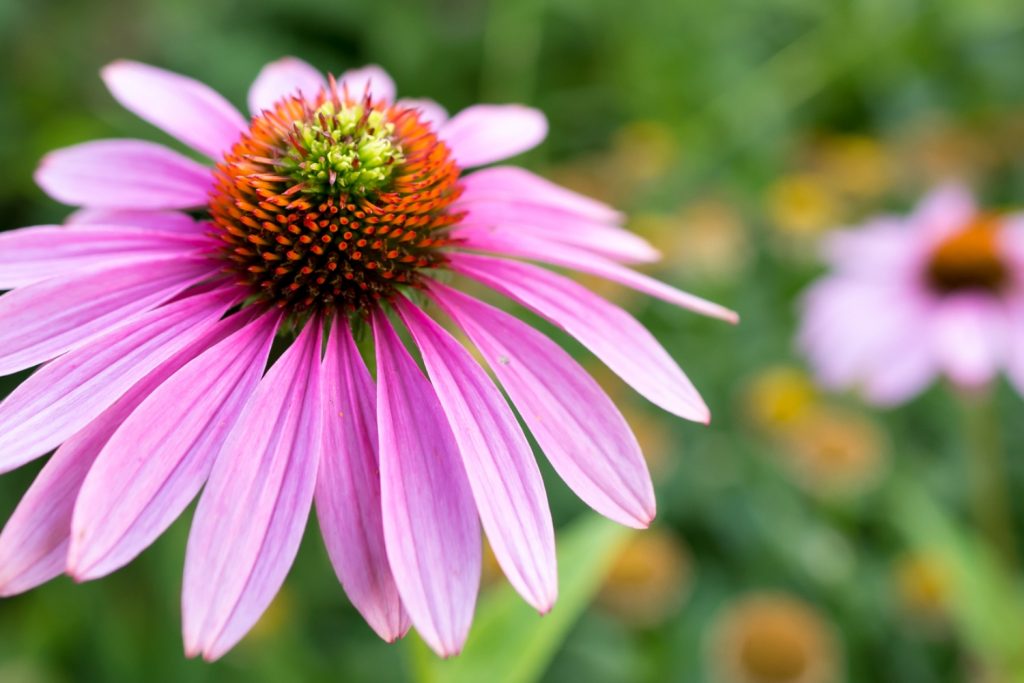
Asters
| Scientific name | Aster spp. |
| Growing zones | 3 through 8 |
| Light requirements | Full sunlight |
| Soil preference | Moist yet well-draining |
| Maximum size | 1’ to 6’ tall by 1’ to 4’ wide |
Asters are gorgeous flowers that look like daisies, and it’s no wonder why — both flowers belong to the Asteraceae family, which also includes sunflowers and marigolds.
Like the other flowers mentioned here, asters have open faces. But their petals are thinner and more delicate.
The aster’s ruffled appearance gives it a whimsical appearance, perfect for fairy gardens.
You can find asters in a variety of colors, including white, pink, red, purple, and blue.
Grow asters alongside other open-faced flowers to keep the pollinators in your backyard busy longer.
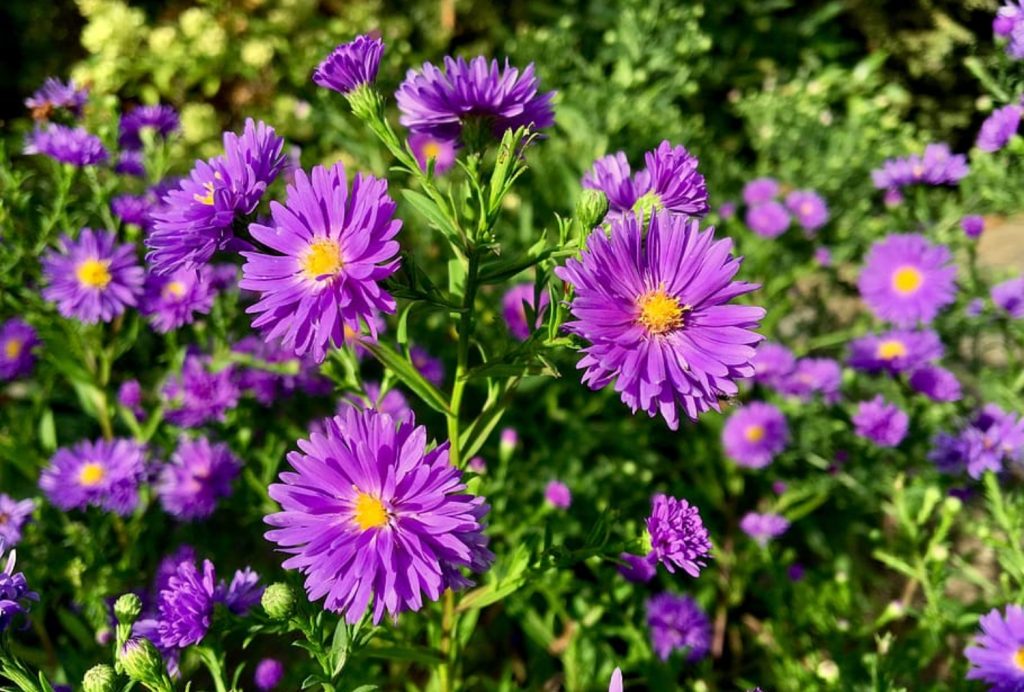
German Chamomile
| Scientific name | Matricaria chamomilla |
| Growing zones | 5 through 8 |
| Light requirements | Full to partial sunlight; needs afternoon shade in extreme heat |
| Soil preference | Loamy, well-draining soil rich in organic matter |
| Maximum size | 12” to 24” tall by 6” to 18” wide |
In terms of color and shape, German chamomile is the closest in appearance to the classic daisy.
These fragrant flowers attract a variety of pollinators, particularly bees.
The flowers can also be harvested to brew a delicious bedtime tea, as chamomile has been shown to reduce stress and promote relaxation.
Unlike Roman chamomile, the most commonly grown variety which acts as a ground cover, German chamomile grows quite tall.
German chamomile is a fast-growing annual plant that can be planted alongside other annuals that look like daisies, including…
Zinnias
| Scientific name | Zinnia elegans |
| Growing zones | 3 through 10 |
| Light requirements | Full sun |
| Soil preference | Sandy, loamy, clay; must be well-draining; prefers soil rich in organic matter |
| Maximum size | 1’ to 3’ tall by 1’ to 2’ wide |
Like German chamomile, zinnias are annuals. These flowers self-seed easily as long as you’re careful not to remove their flower heads after they’ve finished blooming.
You can find zinnias in vibrant shades of pink, purple, orange, yellow, and red.
Zinnias are most often paired with their preferred companions and used as a border around flower beds, but they’re a fun and festive choice for flower boxes.
These cheery blooms are the perfect way to prepare your garden for the summer months and provide local pollinators, including hummingbirds, with a steady supply of nectar.
Zinnias are beloved not only for their appearance but also for their hardiness.
These sturdy flowers have what it takes to stand up to full sun and extreme heat, even during drought conditions.
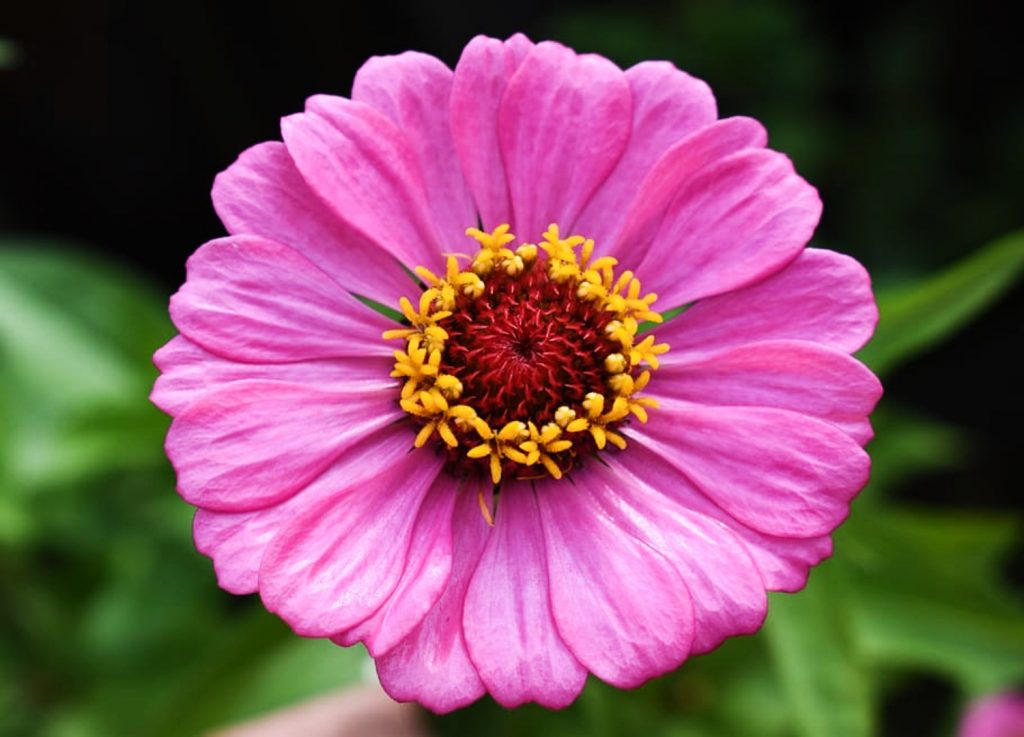
Pot Marigold
| Scientific name | Calendula officinalis |
| Growing zones | 8 through 11 |
| Light requirements | Full to partial sunlight |
| Soil preference | Loamy, rich in organic materials, but well-draining |
| Maximum size | 12” to 24” tall by 12” to 18” wide |
Speaking of low-maintenance, pot marigold is a gorgeous daisy lookalike that doesn’t require much care.
Pot marigold, also known as calendula, is native to the Mediterranean region, which means it prefers well-draining soils and can withstand hot, dry conditions.
Pot marigolds come in shades of orange and yellow.
Like German chamomile, you can use pot marigold flowers to make tea. Pot marigolds have medicinal properties, and are often used to treat digestive ailments.
Plant your pot marigold alongside other Mediterranean natives like lavender, sage, and rosemary to create a fragrant flower bed your guests and local pollinators will enjoy.
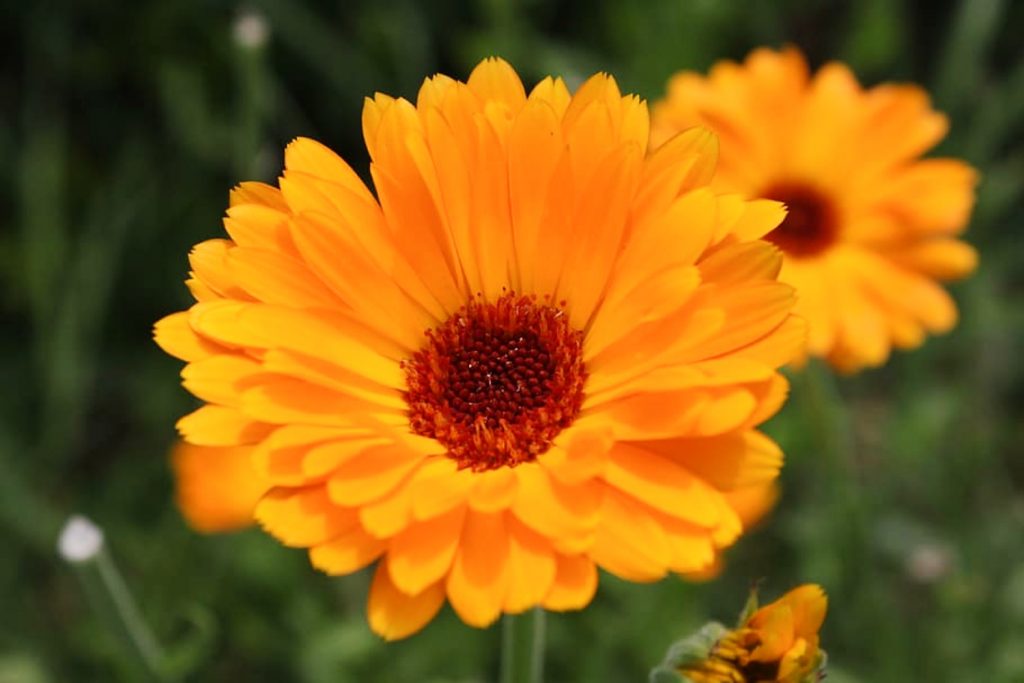
Rose Gentian
| Scientific name | Sabatia campestris |
| Growing zones | 5 through 9 |
| Light requirements | Full to partial sunlight |
| Soil preference | Sandy, loamy, clay, moist yet well-draining |
| Maximum size | 1’ to 2’ tall by 1’ to 2’ wide |
Beautiful pink flowers with yellow centers, rose gentian looks like a cross between a daisy and a hibiscus.
These adorable wildflowers can light up any flower bed and are particularly well-suited to farmhouse-inspired landscapes.
These flowers prefer soils that can stay moist but still drain well. You’ll likely find rose gentian growing along riverbanks and in marshy areas.
Rose gentian is an annual, but it self-seeds successfully when left to its own devices.
Plant rose gentian with black-eyed Susan, purple coneflowers, and forget-me-nots for a nature-inspired flower bed.
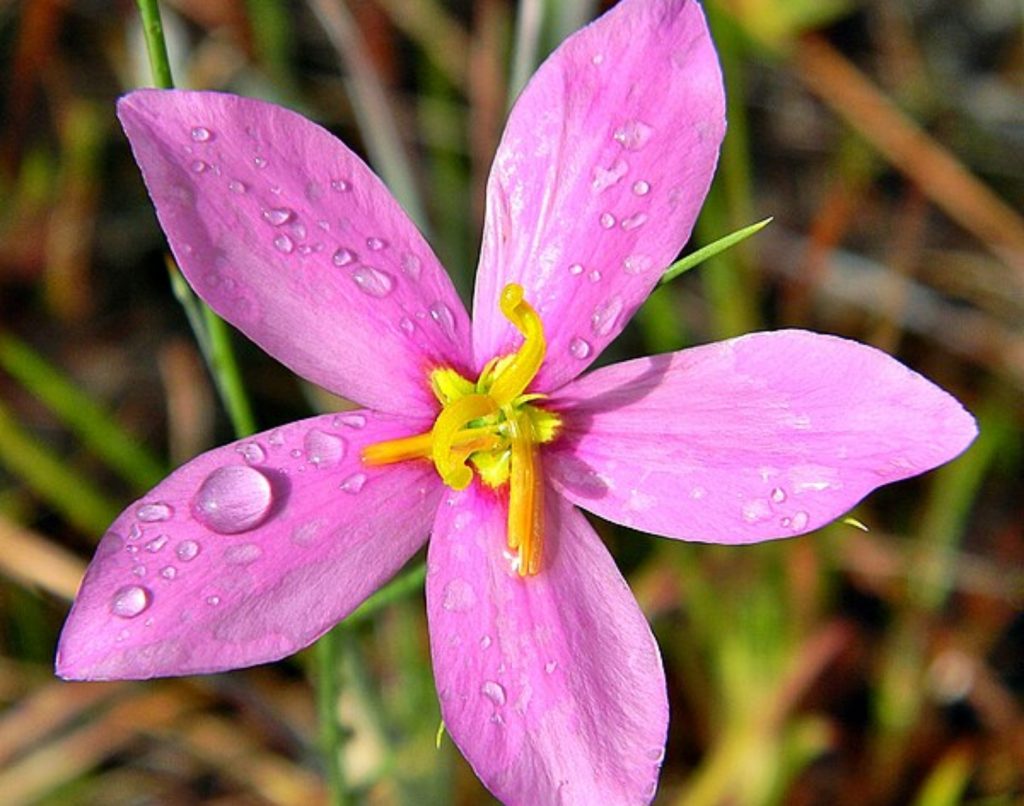
Blanket Flower
| Scientific name | Gaillardia pulchella |
| Growing zones | 3 through 10 |
| Light requirements | Full sunlight |
| Soil preference | Sandy, loamy, rocky. Must be well-draining |
| Maximum size | 1’ to 2’ tall by 1’ to 2’ wide |
Similar to daisies and black-eyed Susans, blanket flowers are tough, rugged wildflowers. Plants produce flowers with ruffled petals that are bright red and pink in the center, and yellow along the edges.
As wildflowers, blanket flowers don’t require much care. These flowers can survive intense heat and even dry spells.
Blanket flowers are popular with all sorts of pollinators.
Including a few blanket flowers in your landscaping is an easy way to support your local ecosystem.
Planted with classic white daisies, blanket flowers add a delightful splash of color, transforming your boring flower beds into an eye-catching arrangement.
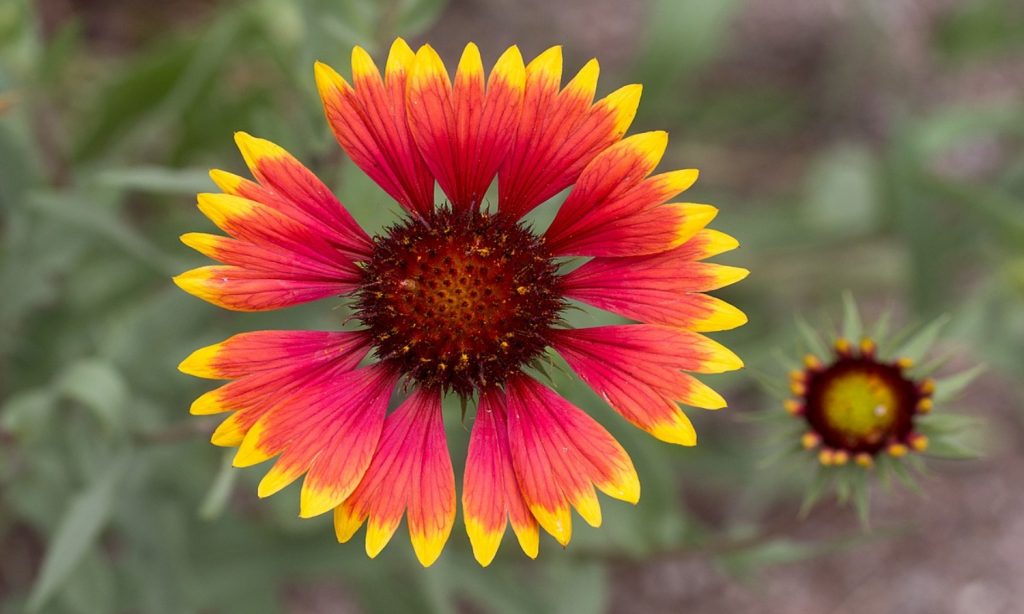
Ice Plant
| Scientific name | Carpobrotus edulis |
| Growing zones | 5 through 9 |
| Light requirements | Full sunlight |
| Soil preference | Sandy, loamy, well-draining |
| Maximum size | 3” to 6” tall by 12” to 24” wide |
Some people consider ice plant to be invasive. So much so that the California Department of Fish and Wildlife discourages people from growing it.
Ice plant is fast-growing, and it can get out of hand if you’re not careful to keep it under control.
But grown in pots, raised beds, and container gardens, ice plant makes for a gorgeous daisy alternative.
This plant’s frilly flowers can be found in pink, yellow, orange, red, and purple. With so many colorful options, there’s something for every garden.
Plant ice plant in your succulent garden or rock garden to fill the space with flowers.
Ice plant is a low-growing ground cover that can be grown with moss rose to create a carpet of beautiful and multicolored flowers.
Mums
| Scientific name | Chrysanthemum |
| Growing zones | 5 through 9 |
| Light requirements | Full sunlight |
| Soil preference | Loamy and well-draining. Prefers soil rich in organic matter, like manure and compost |
| Maximum size | 1’ to 3’ tall by 1’ to 3’ wide |
Mums, short for chrysanthemums, are a long-time favorite. These perennial subshrubs produce dense foliage that makes their daisy-like flowers stand out.
These compact plants are also great for containers.
Mums are a great addition to any landscape because they bloom in autumn, keeping your garden colorful even on the cusp of winter.
You can find mums in so many delightful colors.
Red, pink, and purple mums are a dainty choice perfect for a tea garden. But red, orange, and yellow blooms are much more festive, and match that classic fall color palette.
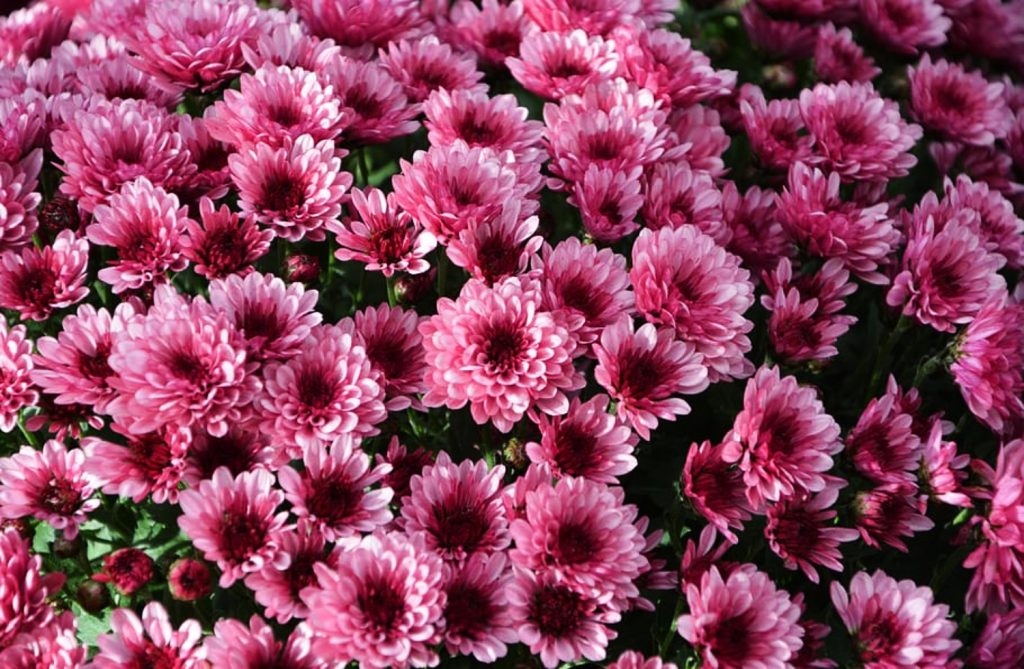
Planting different flowers supports local wildlife
There’s nothing wrong with planting all daisies in your landscaping if that’s what you want.
Research has shown a positive correlation between flower diversity and pollinator diversity. Pollinators enjoy visiting a variety of flowers.
Planting daisies and flowers that look like them offer beneficial insects some variety.
Giving bugs more options to choose from helps them meet all of their nutritional needs and encourages them to visit your garden for longer.
When you plant flowers that look like daisies, you can be confident that you’re doing your part to support the environment, keeping your local ecosystem healthy from the bottom up.
